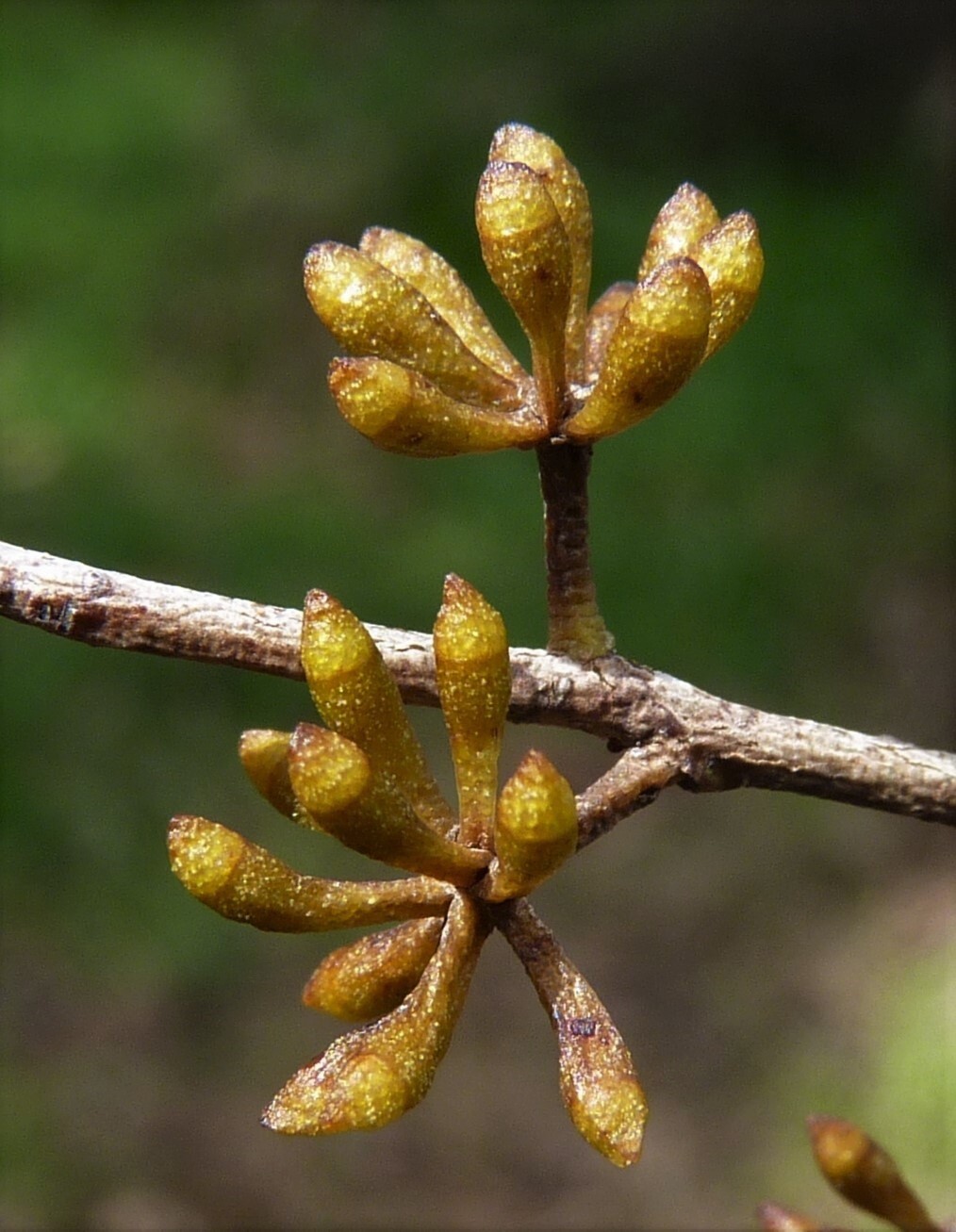Eucalyptus radiata
Sieber ex DC.Small to tall tree, to 40 m tall with dense crown; bark rough to small branches, fibrous. Juvenile leaves sessile, opposite for many pairs, elliptic then lanceolate, 6–7 cm long, 0.7–1.5 cm wide; adult leaves petiolate, alternate, thin-textured, narrowly lanceolate to falcate, 7–12 cm long, 0.6–1.5(–3) cm wide, concolorous, dull to slightly glossy, green or bluish-grey; reticulation moderate to sparse, with numerous island oil glands. Inflorescences axillary, unbranched; peduncles to 0.8 cm long, 7–20(or more)-flowered; buds pedicellate, clavate, to 0.6 cm long, 0.3 cm diam., no scar (single operculum); operculum conical; stamens mostly inflexed; anthers dorsifixed, reniform; ovules in 2 vertical rows; flowers white. Fruit pedicellate, cupular to truncate-globose, to 0.6 cm long, 0.6 cm diam.; disc level; valves 3 or 4, rim level; seed brown to dark brown, glossy, smooth, pyramidal but distorted by one curved face, hilum terminal. Flowers Oct.–Jan.
VVP, VRiv, GipP, OtP, WaP, Gold, CVU, GGr, NIS, EGL, EGU, WPro, HSF, HNF, OtR, Strz, MonT, HFE, VAlp. Also NSW. In Victoria, a common forest tree of ranges north of the Great Dividing Range, from the mountains at the border with New South Wales to Wombat State Forest, the Otway Range and ranges in South Gippsland. An outlier occurs near Delegate River where the grassy uplands of the Monaro region of New South Wales just enter Victoria.
3 subspecies, 2 in Victoria.
Morphological boundaries between subspecies are indistinct, as are the distinctions between E. radiata and other peppermint species. Eucalyptus radiata is usually distinguished by the dense crown of thin, narrow adult leaves. Juvenile leaves are often particularly narrow (to 1 cm wide), e.g. in the country from Mt Buffalo to Benambra. The operculum is usually conical and contrasts with the southern Victorian peppermint, E. willisii which usually has a hemispherical operculum. South and east of the Great Dividing Range, E. radiata is replaced by the blue-crowned, broader leaved E. croajingolensis.
Preumed hybrids with E. dives have been included in E. ×radiodives.
 Spinning
Spinning

